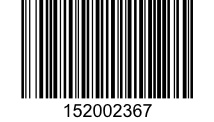DON’T TAKE THE BAIT HI THERE I’M SAM YOU
1 SHH DON’T WAKE THE BABY BIRDS 1 I183 CHILDREN DON’T START WARS DAVID GRIBBLE I WOULD
3 YOU RECOGNIZE THAT DON’T YOU? IT’S AN
3 TONE “DON’T YOU USE THAT TONE WITH ME!”
4 LECTURE EXAM 3 DON’T FORGET TO PUT YOUR
7TH JUNE 2009 JOHN 3117 ROMANS 81217 I DON’T
Don’t Take the Bait
Don’t Take the Bait
Hi there. I’m Sam. You know, we hear a lot these days about online scams and identity theft. There have always been those who have schemed to get something that isn’t rightfully theirs. Today, scams may look different, but the main goal is the same…to turn your money into someone else’s money.
So, how can you tell the difference between a valid message and a scam? How can you help protect yourself?
The good news is - there are steps you can take. Have a look:
Glad you were free to meet for coffee!
Me too… Oops… there goes my Blackberry… Sorry - I’m expecting an important email …this will just take a minute.
Sure. No problem.
… uh oh - this is from my credit card company. Looks urgent.
Is everything okay?
Hmm, there may be a problem with my card. They’re asking me to click on this link or call this number to confirm some recent transactions.
I’d be careful; it may be a scam.
Well, it looks real. I don’t want someone else running up my credit card. Shouldn’t I call the number?
Good question! And the answer is…not yet. Fraudsters are always trying new and clever ways to try and get your personal information. And not just through email. A scam can come to you through any of the ways that we use to communicate with people: the telephone, pop-up messages on your computer and using social networking sites, to name just a few.
So how do you separate phony messages from valid ones?
What you need to realize is the sender or caller may not be who they claim to be. Your first step should be to check if the message is valid, before you take any action that is requested. And there are always ways to do that without using information directly from the message itself.
If that message is a scam, clicking on a link may download malicious software. Or a recording at the other end of the phone number may ask you to enter your credit card or other personal information on the telephone keypad, which is then captured by fraudsters.
Really?! But what if the message is not a scam.
Well, you can check if the message is legitimate or not by using the phone number on the back of your credit card or from a recent statement, and calling THAT number to see if the email is valid.
That’s a good idea. I’ve got my credit card, so I’ll check this out right now.
Well done! You should always check out a message first, before you click on any links, call any numbers, or engage in any personal or business transactions. It won’t take much time and may save you from falling victim to a scam.
Next time you receive a message, you can help protect yourself by following these easy steps:
First and foremost, make sure your computer protections are always up-to-date. This is a critical step! Take advantage of automated software updates for your web browser, operating system and for all software that supports you online (even your browser plug-in’s), or regularly check the applicable websites for your required software "patches" and updates.
Next, always independently verify a message before you take any other action, because the sender may not be who or what they claim to be. Do not click on a link, provide login or other personal information, call a phone number included in a message, wire money or provide credit card or bank account information, unless you first verify that a request is legitimate. Don’t use any links or information from within a message to verify it. Find the appropriate contact information or website from another source.
Third, limit the online information that you make available about yourself. Just because you are able to provide information online, doesn’t mean that you should. Fraudsters may try to get at your information for their own benefit and to your detriment. You should always be careful about including personal information online, on social networking sites, in chat rooms and within unencrypted emails.
… and our fourth tip, if it looks too good to be true, it probably is! Be cautious of emails and websites that promise incredible deals, monetary windfalls or other variations of “something for nothing”. You may end up buying items that you never receive, putting your financial information into the hands of fraudsters, or unknowingly downloading malicious software by clicking on a really tempting link.
Be careful how you handle email and other messages, as well as the websites that you access. A little caution now may save you a lot of headaches later.
ABOUT PERIODONTAL DISEASE MANY PET OWNERS DON’T REALIZE THAT
ADDING AND SUBTRACTING (REMEMBER DON’T CHANGE ANY POWERS!) SIMPLIFY
ALL ABOUT RELATIONSHIPS W3 NOT GOOD AT RELATIONSHIPS? DON’T
Tags: don’t take, legitimate. don’t, don’t, there
- POWERPLUSWATERMARKOBJECT1021080 UPUTSTVO ZA POPUNJAVANJE DOKUMENTACIJE APLIKACIJU POPUNITI NA RAČUNARU
- ARCHIVES OF THE INTERNATIONAL SECRETARIAT OF AMNESTY INTERNATIONAL INVENTORY
- A DMINISTRACJA PUBLICZNA 1 POJĘCIE ADMINISTRACJI PUBLICZNEJ
- 4 LIETUVOS VAIKŲ IR PAAUGLIŲ DRAUGIJOS NARIŲ SĄRAŠAS 2015
- LIBERECKÝ KRAJ VÝBOR PRO DOPRAVU ADRESA U JEZU 6422A
- 8 PRIMERA REUNIÓN DEL CONSEJO ANDINO
- KHASIAT BUAH NAGA ( DRAGON FRUIT ) 27SEP2012
- 18 RJEŠENJE O PRIVREMENOM RASPOREDU ŽENE ZA VRIJEME TRUDNOĆE
- “BIBSJOUR2015” 21 FEB 2016 (211 PP) JAMES E MAY
- ISAKMP (00) SENDING NATT VENDOR ID REV 2
- OSA ÚSEK VEŘEJNÉHO PROVOZOVÁNÍ VÁCLAV KOUBEK TŘÍDA ČS ARMÁDY
- FORM AND SUBSTANCE OF A CALIFORNIA GOVERNMENT TORT CLAIM
- ACUERDO Nº 52005 TÍTULO ACUERDO POR EL QUE SE
- X VAS JORNADAS MEDITERRANEAS DE CONFRONTACIONES TERAPEUTICAS EN MEDICINA
- ISOPROPANOL C3H8O FICHA DE SEGURIDAD PICTOGRAMAS F FÁCILMENTE INFLAMABLE
- PALABRAS CON MOTIVO DE LA CELEBRACION DE LOS 40
- SINGLE PROCESS INITIATIVE DFARS CASE 97D014 FINAL RULE
- REGISTROS DE ASOCIACIONES DE LA COMUNIDAD AUTÓNOMA DE
- CASOS PRÁCTICOS DE DERECHO ROMANO CONSEJOS 1 ES
- BATH AND NORTH EAST SOMERSET COUNCIL EQUALITY IMPACT ASSESSMENT
- ACUERDO ENTRE PROPIETARIO Y SOLICITANTE A PRESENTAR ANTE LA
- A SOCIACIÓN GADITANA DE CLUBES FÚTBOL MODESTO C GUADALMESÍ
- GUIDELINES APPLYING FOR REGULATION UNDER THE HEALTH PRACTITIONERS COMPETENCE
- P RESS RELEASE EARTH | ATMOSPHERE CERAMICS BY HALIMA
- PROJECT INFORMATION DOCUMENT (PID) CONCEPT STAGE REPORT NO 56998
- ESTUDIOS PREVIOS TIENDA VIRTUAL DEL ESTADO COLOMBIANO CÓDIGO FTGC0850
- NOTA DE PRENSA X 052018 LAS UNIVERSIDADES ESPAÑOLAS CELEBRAN
- CLASSIFIED STAFF COUNCIL MINUTES FROM NOVEMBER 1 2001 100
- FORM 10E APPLICATION FOR THE CERTIFICATION OF AN INSTITUTION
- USING PAGINATION AND FILTER QUERY PARAMS IN HORIZON SERVER
4 ADVENTSONNTAG 2009 PREDIGT ZUM LESUNGSTEXT AUS DEM HEBRÄERBRIEF
ŽUPANIJSKO NATJECANJE ŠŠK OSNOVNIH ŠKOLA U PLIVANJU BAZEN U
 BEOWULF NO AUTHOR ATTRIBUTED THE HITCHHIKER’S GUIDE TO THE
BEOWULF NO AUTHOR ATTRIBUTED THE HITCHHIKER’S GUIDE TO THEDECRETO DE PRUEBAS DE OFICIO – ES FACULTAD QUE
 INSTITUTION NAME AND ADDRESS DIABETES MEDICAL MANAGEMENT PLAN
INSTITUTION NAME AND ADDRESS DIABETES MEDICAL MANAGEMENT PLANNUMERO LIBRO PODER GENERAL JUDICIAL Y
KISA ÜRÜN BİLGİSİ 1 BEŞERİ TIBBİ ÜRÜNÜN ADI DEVAPEN
MRSID VERSIÓN 3 IMÁGENES LOSSLESS DE VARIOS GB EN
 DEPARTAMENTO DE MATEMÁTICAS LIBRO DE TEXTO EMPRESA E INICIATIVA
DEPARTAMENTO DE MATEMÁTICAS LIBRO DE TEXTO EMPRESA E INICIATIVA POLJOPRIVREDA KRŠASTOČARSTVO KRŠA JESENSKI ISPITNI ROK 20162017 PREDMET 1
POLJOPRIVREDA KRŠASTOČARSTVO KRŠA JESENSKI ISPITNI ROK 20162017 PREDMET 1PAISAJE AGRARIO DE LA ESPAÑA HÚMEDA NORTE Y NOROESTE
21 REPUBLICA DE CHILE MINISTERIO DE SALUD
1 LA PARCELA CATASTRAL Y LA FINCA REGISTRAL SON
 CERTIFICATE OF ATTENDANCE FOR STAFF MOBILITY NAME OF THE
CERTIFICATE OF ATTENDANCE FOR STAFF MOBILITY NAME OF THETEXT WORD COUNT 2957 ABSTRACT WORD COUNT 182 NUMBER
 EQUIPARACIÓN DE ACTIVIDADES COMO FORMACIÓN PERMANENTE DEL PROFESORADO PERSONA
EQUIPARACIÓN DE ACTIVIDADES COMO FORMACIÓN PERMANENTE DEL PROFESORADO PERSONAVALIDEZ Y CONFIABILIDAD DEL ESTUDIO SOCIOECONÓMICO DRA ROSARIO SILVA
POLIKLINIKA ZA REUMATSKE BOLESTI FIZIKALNU MEDICINU I REHABILITACIJU DRDRAGO
 COLEGIO EL VALLE EJERCICIOS DE VERANO 3ºESO TRABAJO DE
COLEGIO EL VALLE EJERCICIOS DE VERANO 3ºESO TRABAJO DE PRONUNCIAMIENTO Nº 552 2012DSU ENTIDAD PROYECTO ESPECIAL DE
PRONUNCIAMIENTO Nº 552 2012DSU ENTIDAD PROYECTO ESPECIAL DE